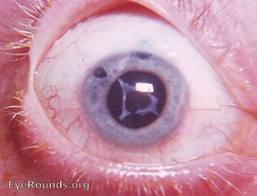Losing The “Empty Chair” At Trial
By admin on April 6, 2012
It has become common practice in multi-party toxic tort litigation for co-defendants to avoid taking potshots at each other during discovery or at trial. Pursuant to this reasoning, if the defendants point fingers at each other, it will only inure to plaintiff’s benefit. Therefore, it may be preferable for co-defendants to settle any differences they may have in private and present a unified front in the courtroom. This is a particularly helpful startegy when plaintiff is expected to have difficulty proving causation. Why make the plaintiff’s job any easier?
Consistent with this strategy, toxic tort defendants would rather target culpable non-parties who are not represented by counsel at trial and may not even appear as witnesses, colloquially referred to as “empty chair” defendants. It becomes the burden of the attorney representing the plaintiff to defend these “empty chairs” in order to obtain a full recovery for his client. Otherwise, plaintiff runs the risk that any verdict will be diminished by the empty chair’s proportion of fault. If one or more defendants obtains a dismissal prior to trial, the absent parties are subject to attack as “empty chair” defendants at trial by their former co-defendants.
There is emerging case law in New York that may force defendants to reassess the strategy of how “empty chair” defendants are pursued. In an article titled, “Recent Decisions on Empty Chair Defendants,” which appeared in the New York Law Journal on April 3, 2012, plaintiff trial lawyers, Thomas A. Moore and Matthew Gaier, discuss a recent First Department case,Carmona v. Mathisson, 92 A.D.3d 492 (1st Dep’t 2012), which held that the remaining defendants at trial were precluded from blaming the dismissed defendant under the “law of the case” doctrine. As Mssrs. Moore and Gaier discuss, the plaintiff in Carmona was injured during cataract surgery in which a  machine was used to assist in the removal of the lens with the cataract.
machine was used to assist in the removal of the lens with the cataract.
The plaintiff brought suit against the surgeon, the hospital where the procedure was performed, and the manufacturer of the machine. The manufacturer obtained partial summary judgment prior to trial pursuant to which the claims for negligent failure to warn and breach of warranty were dismissed. On appeal, the Appellate Division, First Department, dismissed the remaining counts for strict liability and negligence based upon manufacturing and design defects. See 54 A.D.3d 633 (1st Dep’t 2008). The treating physicians and the hospital vigorously opposed the manufacturers’ efforts to extricate itself from the case at every step along the way.
Later, at trial, the treating physicians and the hospital were permitted to elicit testimony that the machine malfunctioned and/or contained a design defect. The trial court included the manufacturer on the jury’s verdict sheet for the purpose of apportioning liability. Article 16 of the CPLR, not only imposes limitations on joint and several liability, but permits the culpable conduct of non-parties to be considered in apportioning a defendant’s fault for the purposes of such liability. No longer in the case to defend itself, the treating physicians went after the manufacturer at trial with guns blazing.
After the jury returned a defense verdict on behalf of the defendants, the plaintiff appealed. The Appellate Division reversed, holding that it was error for the trial court to permit evidence that the machine was defective and to include the manufacturer on the verdict sheet.
The Appellate Division held that its prior decision on the summary judgment appeal constituted “law of the case,” which was binding on the trial court and operated to foreclose any re-examination of the question absent a showing of subsequent evidence or change of law. The Court also held that on retrial the treating physicians would not be precluded from presenting a defense based on a claim of unexpected malfunction of the machine. The Court observed that the summary judgment decision found that the machine complied with design and manufacturing standards, but did not rule out that the machine could have malfunctioned for some other reason. Based upon the evidence at trial, the court observed, a jury could determine that the machine could malfunction even absent a defect. Therefore, the court left open a narrow window for the physicians and the hospital to still go after the empty chair.
In a medical malpractice action in which a medical device manufacturer is thrown into the defendant mix of physician and hospital defendants, it is perhaps not unusual that the physician defendants aggressively pursue the manufacturer. This scenario may play out differently in a toxic tort case where more cooperation among defendants is anticipated. The take-away from Carmona is that toxic tort defense counsel can no longer assume that any dismissed defendant becomes an easy “empty chair” to attack at trial.
One first has to determine how the “empty chair” arrives at the courtroom – through inattention of plaintiff; settlement prior to trial; or as a result of summary judgment. The answer to that inquiry may have a significant impact on the remaining defendants’ case evaluation and the extent to which an “empty chair” strategy can be successfully pursued.

 The application of
The application of